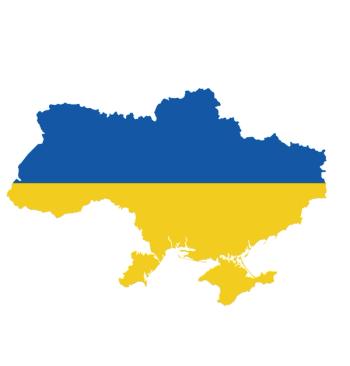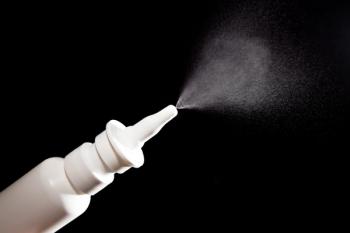
- Psychiatric Times Vol 26 No 7
- Volume 26
- Issue 7
PTSD Has Unreliable Diagnostic Criteria
Currently the Veterans Administration (VA) is the world’s largest recipient of per patient funding for PTSD. The VA treats 200,000 veterans with this diagnosis annually at a cost of $4 billion. But research calls into question the very existence of the “PTSD” syndrome, and its diagnostic formulation remains invalid. We do not minimize the suffering of those who experience trauma or the need for comfort and restitution. We seek only to reexamine research evidence, to clarify the impact of culture on diagnosis, to reevaluate the consequences of trauma, and to ensure optimal allocation of resources.
Currently the Veterans Administration (VA) is the world’s largest recipient of per patient funding for PTSD. The VA treats 200,000 veterans with this diagnosis annually at a cost of $4 billion. But research calls into question the very existence of the “PTSD” syndrome, and its diagnostic formulation remains invalid. We do not minimize the suffering of those who experience trauma or the need for comfort and restitution. We seek only to reexamine research evidence, to clarify the impact of culture on diagnosis, to reevaluate the consequences of trauma, and to ensure optimal allocation of resources.
The 1980 edition of DSM (DSM-III) included PTSD after lobbying by antiwar psychiatrists, Vietnam veterans’ organizations, social workers, and psychologists.1 According to Scott,2 these advocates argued that traumatic memories of war were reemerging in more virulent form as PTSD. This perspective focused on the aftereffects of war rather than the psychodynamics of individual patients.3 It was assumed that an organic brain change had occurred secondary to the psychological arousal of stress. A second assumption was that those treated would become chronically disabled.
The American Psychiatric Association (APA) started by using the military’s diagnostic criteria. The DSM-IV sourcebook contains the empirical evidence used to create categories of disorders.4 The decision-making process is complex, and human judgment is required to create diagnoses. APA researchers responded to criticism of the way PTSD was formulated by making changes: 11 in the 1987 revision of DSM-III-R, and 15 in the 1994 DSM-IV edition.5 Today there are almost 200 combinations of symptoms through which PTSD can be diagnosed.
The PTSD symptom profile overlaps with those of common mental conditions, such as mood disorders, anxiety disorders, and substance abuse. A 1995 survey reported that 88% of men and 79% of women with a diagnosis of PTSD had at least 1 comorbid diagnosis.6 Major depression, the most common comorbidity, was diagnosed in almost 50% of patients with PTSD. That the PTSD cluster incorporates many nonspecific indicators of psychiatric distress found in other common psychiatric conditions calls into question the validity of the diagnostic category.
There is a more fundamental problem: PTSD symptoms may not be linked to trauma. Bodkin and colleagues7 showed that among those for whom pharmacological treatment of major depression was considered, patients with and without a trauma history met the diagnostic criteria for PTSD at identical rates (78%). Gold and coworkers8 showed that college students without a traumatic experience were more likely to meet the other diagnostic criteria of PTSD. In 1988, the National Vietnam Veterans Readjustment Study found that 30.9% of Vietnam veterans had full-blown PTSD-but only 15% of these vets had been assigned to combat units.9 Analyses using narrower diagnostic criteria and verified reports of trauma exposure reported rates from 2.9% to 15.5%.10
Subjective symptoms and financial benefit suggest that secondary gain plays a role in PTSD diagnoses. One of us (PB) in 2000 reviewed the medical records of 90 patients with a primary PTSD diagnosis treated in a VA outpatient clinic. Records showed a uniformity and consistency in key words and subjective reports. Such a repetitive quality might reflect precise diagnostic criteria and reliability among diagnosticians; it could also reflect expectancies and elicitation of key descriptions by examiners. This tendency was noted in reports of English “shell shock” victims and Russian “contusion” casualties during WWI, regarded as predecessors of PTSD.11 These earlier diagnoses had a different symptom constellation also characterized by uniformity. The victims shook, stuttered, limped, and showed sensory-motor signs (such as deafness, muteness, and blindness). They did not report the anger, numbing, or flashback symptoms said to characterize PTSD today. Leaders and activists in VA centers told PB that veterans were counseled (coached) on how to present to the psychiatrists determining disability benefits.
Frueh and associates12 noted that patient reports of military combat may not match military records. They found that 32% of men attending a VA outpatient combat-related PTSD clinic had no evidence of combat exposure in their military record. Elhai and colleagues13 reported that compensation-seeking veterans were more likely to overreport and exaggerate PTSD symptoms. A 2005 report from the VA Office of Inspector General noted that veterans’ PTSD symptoms became more severe until their compensation reached the 100% disability level.14 Thereafter, there was an 82% drop in the use of VA mental health services but no change in the use of other medical services.
In summary, the current diagnostic criteria for PTSD are unsatisfactory because:
• It is difficult to distinguish between the PTSD symptom cluster and what could be considered a normal human response to massive trauma.
• PTSD, generalized anxiety disorder, depressive disorder, and substance dependence are difficult to separate.
Symptoms that define PTSD are not strongly correlated with trauma.
• The diagnosis of PTSD relies on unverified trauma and subjective reports of symptoms.
• Financial compensation is an important reinforcing factor suggesting secondary gain.
References:
1. Baldwin SA, Williams D, Houts AC. A case study in critical psychopathology. The Scientific Review of Mental Health Practice. 2004;3:33-57.
2. Scott W. PTSD in DSM-III: a case in the politics of diagnosis and disease. Social Problems. 1990;37: 294-310.
3. Jones E, Wessely S. A paradigm shift in the conceptualization of psychological trauma in the 20th century. J Anxiety Disord. 2007;21:164-175.
4. DSM-IV Sourcebook. Arlington, VA: American Psychiatric Publishing, Inc; 1994.
5. Diagnostic and Statistical Manual of Mental Disorders, Fourth Edition. Arlington, VA: American Psychiatric Publishing, Inc; 1994.
6. Kessler RC, Sonnega A, Bromet E, et al. Posttraumatic stress disorder in the National Comorbidity Survey. Arch Gen Psychiatry. 1995;52:1048-1060.
7. Bodkin JA, Pope HG, Detke MJ, Hudson JI. Is PTSD caused by traumatic stress? J Anxiety Disord. 2007;
21:176-182.
8. Gold SD, Marx BP, Soler-Baillo JM, Sloan DM. Is life stress more traumatic than traumatic stress? J Anxiety Disord. 2005;19:687-698.
9. McNally RJ. Can we solve the mysteries of the National Vietnam Veterans Readjustment Study? J Anxiety Disord. 2007;21:192-200.
10. Kulka RA, Schlenger WE, Fairbank JA, et al. National Vietnam Veterans Readjustment Study (NVVRS): description, current status, and initial PTSD prevalence estimates. Research Triangle Park, NC: Research Triangle Institute; 1988.
11. Barglow P, Bowman M, Friedlander J. Is post-traumatic stress disorder a valid psychiatric diagnosis? The Scientific Review of Alternative Medicine. 2006;
10:36-44.
12. Frueh BC, Elhai JD, Grubaugh AL, et al. Documented combat exposure of US veterans seeking treatment for combat-related post-traumatic stress disorder. Br J Psychiatry. 2005;186:467-475.
13. Elhai JD, North TC, Frueh BC. Health service use predictors among trauma survivors: a critical review. Psychol Serv. 2005;2:3-19.
14. Department of Veterans Affairs Office of Inspector General Report No. 05-00765-137. Washington, DC; 2005. http://thomas.loc.gov/cgi-bin/cpquery/?&sid=
cp1095TraP&refer=&r_n=hr305.109&db_id=109&
item=&sel=TOC_60057&. Accessed June 10, 2009.
Articles in this issue
over 16 years ago
Inflammation, Psychosis, and the Brainover 16 years ago
Delirium With Catatonic Features: A New Subtype?over 16 years ago
Helping Children Hospitalized for Ragesover 16 years ago
A Model for Treating Refugees Traumatized by Violenceover 16 years ago
Intense Debate Over Implementation of New Parity Lawover 16 years ago
Stalking: The Veiled Epidemicover 16 years ago
Battered Woman SyndromeNewsletter
Receive trusted psychiatric news, expert analysis, and clinical insights — subscribe today to support your practice and your patients.














